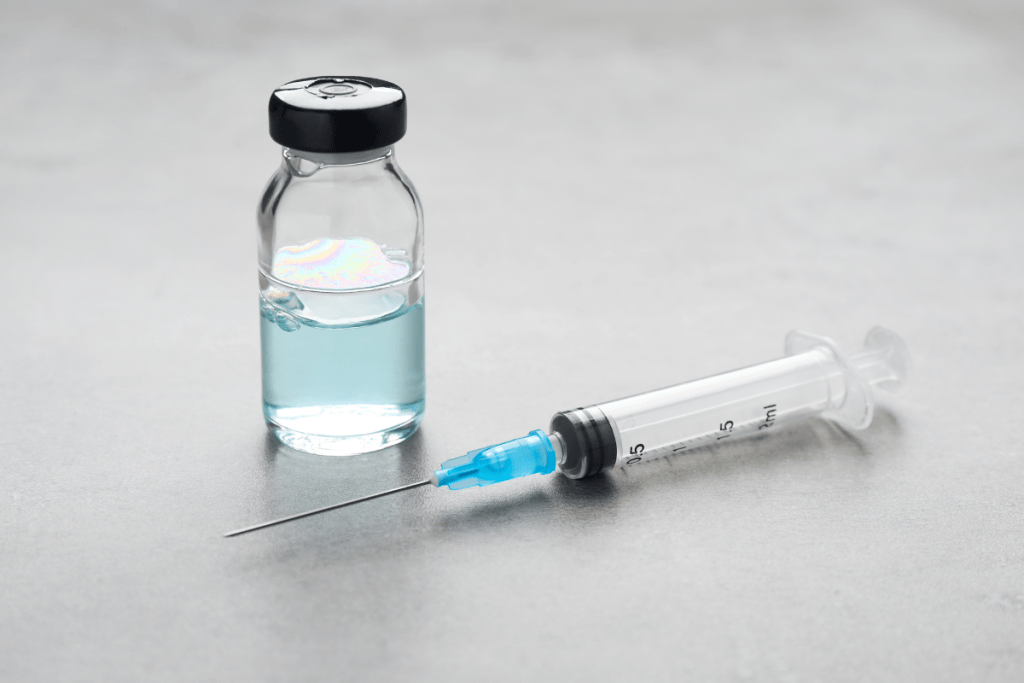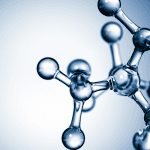Collagen-stimulating injectables are often evaluated when patients want structural support and gradual volume change. For many practices, the most common decision is whether to use calcium hydroxylapatite (CaHA) or poly-L-lactic acid (PLLA) for similar goals. This article outlines how to compare volume restoration fillers in a clinic setting, using conservative, label-forward thinking.
You will see both materials discussed under brand examples. Your final choice should reflect indication, patient factors, technique training, and how your clinic monitors delayed events. It should also reflect how you document, consent, and set expectations for gradual outcomes.
Key Takeaways
- Different materials: CaHA and PLLA behave differently in tissue.
- Plan for timing: onset and evolution can vary by product and technique.
- Screen thoughtfully: history and immune risk matter for delayed reactions.
- Document consistently: lot tracking and consent reduce downstream friction.
- Operational fit: training and follow-up capacity influence product choice.
Choosing volume restoration fillers: CaHA vs PLLA
Both CaHA and PLLA are commonly described as biostimulators (collagen stimulators). In practice, that label can hide meaningful differences. CaHA is a mineral-like particulate suspended in a gel carrier. PLLA is a biodegradable polymer particle that is typically reconstituted prior to use. Each has a distinct feel, handling profile, and typical clinical “rhythm” in terms of when change is noticed.
It helps to separate three questions. First, what tissue effect are you aiming for: contour support, diffuse volumization, or skin quality changes? Second, what timeline can your patient and clinic realistically support? Third, what adverse-event profile are you prepared to recognize and manage, including delayed nodules?
| Comparison Area | CaHA (example class) | PLLA (example class) |
|---|---|---|
| Primary “feel” in clinic use | Often described as more structural and moldable in select planes | Often described as more diffuse and gradual in effect |
| Onset and evolution | May show earlier contour change, with longer-term collagen contribution | Typically gradual change over a series of visits |
| Technique sensitivity | Plane selection and post-treatment molding can matter | Reconstitution, distribution, and massage protocols can matter |
| Common planning focus | Contour and support where rigidity is desired | Global facial volume loss where gradual build is acceptable |
For background reading on each material class, your team can reference Calcium Hydroxylapatite Filler Guide and Poly-L-Lactic Acid Role. For a broader menu of options, see the Types Of Dermal Fillers overview and the Dermal Fillers Category hub.
Why it matters: Material choice affects follow-up cadence and how you triage late complaints.
Mechanism, Handling, and Expected Timeline
When clinicians ask for “collagen stimulating fillers explained,” the most useful answer is practical. What is the likely tissue response, and what does that mean for scheduling and counseling? Even within a product class, technique and patient biology can shift results. Avoid oversimplifying timelines in marketing copy or consent forms.
In day-to-day planning, volume restoration fillers are often selected based on how quickly contour needs to change and how predictable the immediate post-procedure appearance should be. That decision becomes operational when patients travel, when your clinic has limited follow-up slots, or when your providers rotate.
CaHA in clinic practice
CaHA products are frequently discussed in the context of scaffold-like support and collagen stimulation over time. Many clinicians describe a more immediate shaping component due to the carrier gel, followed by longer-term collagen remodeling. Where permitted by labeling and training, some practices also discuss dilution or hyperdilution approaches for broader skin quality goals, but specifics should follow product labeling, training standards, and your medical director’s protocols. If your team wants a brand-based overview, see How Radiesse Boosts Collagen for high-level concepts.
PLLA in clinic practice
PLLA is typically positioned as a gradual volumizer that relies on collagen generation over time. Because results are not usually “instant,” many clinics build a structured series plan, with consistent photography and counseling on delayed change. Reconstitution and distribution technique are commonly emphasized in training because product placement can influence palpability and nodule risk. For clinics comparing approaches and counseling language, Sculptra Vs Filler Planning is a useful internal primer.
Clinical Use Cases: Face, Temples, Jawline, and Hands
Decision-making is usually anatomy-first. Midface and cheek volume loss often requires support that respects retaining ligaments and avoids over-projection. Temples can demand careful plane selection and vascular awareness, plus realistic expectations about how much hollowing is correctable. Jawline and chin augmentation with biostimulators is often discussed as a way to add structure, but the aesthetic goal and risk tolerance vary widely by patient.
Brands are often used as shorthand in these conversations, so align your internal language with what you actually stock and train on. For example, clinics may compare Radiesse 3 mL as a CaHA example and Sculptra 2 Vials as a PLLA example. Some practices also evaluate other collagen-stimulating options depending on local availability and training, such as Lanluma-V. Use product-specific labeling, not assumptions, when defining on-label areas and endpoints.
Hands come up frequently in consults. “Can Radiesse be used in hands” is a common operational question because it affects photography, consent language, and follow-up templates. Your safest workflow is to verify the current approved indication and your jurisdiction’s scope requirements before offering a hand protocol. If you need broader context on volume strategies beyond a single material, review Facial Volume Restoration Options.
MedWholesaleSupplies serves licensed healthcare professionals with practice-focused access.
Candidate Screening and Counseling That Fits Real Clinic Flow
Most “who is a candidate” questions are really screening and expectation questions. Your intake should clarify prior filler history, prior inflammatory reactions, autoimmune conditions, and current skin infections. You also need a consistent approach for patients with a history of nodules or prior complication workups. These details affect material choice, follow-up intensity, and whether you proceed at all.
Because biostimulatory products can change gradually, the consent conversation should include timing, photography, and the possibility of delayed adverse events. Use plain language alongside clinical terms. For example, explain that a nodule is a small lump that can be palpable or visible, and that a granuloma is a specific inflammatory reaction that may require evaluation. Also address “before and after expectations” with conservative framing, since lighting, swelling, and baseline asymmetry can distort early comparisons.
How to compare: four decision factors
- Anatomic goal: contour support vs diffuse volumization.
- Time horizon: immediate change vs gradual build.
- Follow-up capacity: ability to monitor delayed concerns.
- Technique readiness: training, cannula/needle approach, and plane discipline.
For additional context on non-HA versus HA positioning, see HA Vs Non-HA Fillers. That kind of framing helps align staff scripts with provider planning.
Safety Considerations and Responding to Late-Onset Issues
Clinics often search for “calcium hydroxylapatite safety and side effects” and “poly l lactic acid safety and side effects” when building protocols. The practical takeaway is that both can cause immediate injection-site reactions, and both can be associated with delayed nodules. The probability and presentation may vary with patient factors, technique, and product handling. Avoid assuming that one class is “risk-free.”
Build a pathway for triage and documentation. Patients may call weeks or months later with firmness, tenderness, asymmetry, or visible lumps. Your intake team should have a script that escalates appropriately, including photo requests and timing details. Providers should document the product, lot, injection plane, and any post-procedure events that could influence inflammation.
Quick tip: Keep a standardized “late concern” note template in your EMR.
For operational consistency, decide in advance how you will discuss contraindications for collagen stimulators. The label and your medical director’s policies should guide this, especially around active infection, hypersensitivity history, and patients with complex inflammatory conditions. If you provide combination approaches (for example, combining HA with a biostimulator), document the rationale and sequence clearly to reduce later confusion during complication workups.
Inventory is sourced as brand-name product via vetted distribution partners.
Clinic Operations Snapshot: From Verification to Recordkeeping
Biostimulators add operational complexity compared with “one-and-done” volumizers. That complexity shows up in staff training, consent language, and follow-up scheduling. It also shows up in procurement, because you need reliable sourcing and traceability if a manufacturer notice or complaint arises.
Many practices standardize volume restoration fillers within a small formulary to reduce technique variability across injectors. If you do that, create clear criteria for when clinicians can deviate. Your training log should map product class to anatomic zones, typical counseling points, and escalation triggers for late issues.
Clinic workflow snapshot
- Verify credentials: ensure purchasing aligns with licensed use.
- Document inventory: record lot, expiry, and receiving checks.
- Store per label: follow manufacturer handling instructions.
- Standardize consent: include gradual change and late events.
- Schedule follow-up: set photography and review touchpoints.
- Record outcomes: track patient-reported concerns consistently.
Procurement and documentation checklist
- Approved supplier list: limit purchasing to verified channels.
- Lot traceability: link lot numbers to patient charts.
- Cold-chain clarity: confirm any label-specific requirements.
- Receiving SOP: check packaging integrity on arrival.
- Incident pathway: define who handles complaints and returns.
- Training alignment: match stocked items to injector competencies.
- Policy review cadence: update scripts when labeling changes.
If your team is building a broader inventory view, the Dermal Fillers Product Hub can help you keep categories organized across HA and non-HA options. If you operate across multiple locations, consider whether your supplier can support consistent US distribution for the same SKUs and lot documentation needs.
Practical Planning: Sessions, Maintenance, and Cost Discussions
Patients often ask “how long do results last,” especially when comparing CaHA and PLLA. In clinic terms, durability is a spectrum, not a guarantee. It can depend on baseline tissue quality, degree of volume loss, product selection, and technique. It can also depend on how you define the endpoint: visible contour, tactile firmness, or skin texture change.
When your practice sets “number of sessions” expectations, keep them conservative and tied to your assessment process rather than promises. Some protocols are designed as a series, while others may be presented as a single visit with optional touch-ups. Your best control lever is clarity: state what the plan is, how you will assess response, and how you will document that assessment with photos and standardized notes.
Cost considerations for biostimulator fillers can be handled professionally without quoting prices in educational content. Frame the discussion around total care pathway. Include staff time, follow-up visits, and the overhead of managing late concerns. If your clinic uses multiple biostimulators, consider offering standardized counseling sheets that explain why the timeline differs by product class.
- Set time expectations: emphasize gradual change where applicable.
- Define maintenance: discuss reassessment intervals, not promises.
- Compare alternatives: include fillers vs fat grafting at a high level.
- Explain combination logic: clarify sequencing when HA is added.
MedWholesaleSupplies focuses on supplying licensed clinics through screened distributor sourcing.
Authoritative Sources
- FDA overview of dermal fillers and risks
- FDA list of approved dermal fillers
- American Academy of Dermatology filler basics
Further reading: If you are formalizing counseling language, start with Sculptra Aesthetic Overview and then compare positioning across categories in Radiesse Vs Voluma Comparison. Keep your internal protocols aligned with current labeling and training resources.
This content is for informational purposes only and is not a substitute for professional medical advice.






